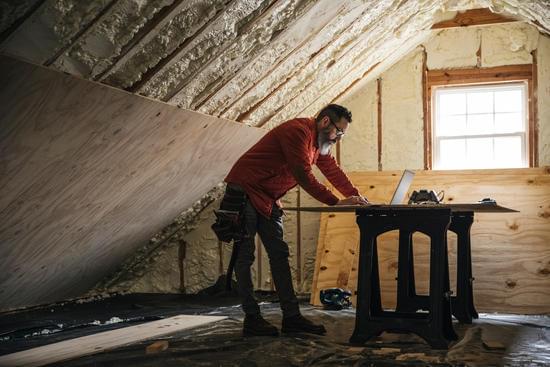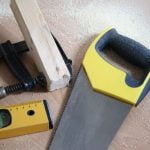Are you considering making renovations to your home but unsure of how to finance them? One option worth exploring is the concept of adding money to your home loan for improvements. By incorporating renovation costs into your mortgage, you may be able to access the funds needed to make desired changes to your home.
Using home equity as a means of financing renovations has increased in popularity over the years. This article aims to provide an in-depth understanding of how homeowners can leverage their home equity to add money to their existing mortgage in order to fund improvements and upgrades.
In the following sections, we will explore the benefits and potential risks of adding to your home loan for renovations, as well as the eligibility requirements and steps involved in the application process. Additionally, we will consider alternative financing options for home improvements and showcase real-life case studies of individuals who have successfully utilized this method.
Whether you are considering minor updates or major remodeling projects, adding money to your home loan for improvements could be a viable solution for achieving your desired home transformation.
Understanding Home Equity
Home equity refers to the portion of your home that you truly own, calculated by taking the current market value of your property and subtracting any outstanding mortgage or other liens. This essentially represents the value of your home that you can claim after considering any debts. Using home equity to finance renovations can be a smart move for homeowners looking to make improvements without having to take out a separate loan.
There are several benefits to using home equity for renovations. Firstly, it allows homeowners to access a larger sum of money compared to alternative financing options due to the accumulated equity in their property. Additionally, using home equity often results in lower interest rates compared to personal loans or credit cards, making it a more cost-effective option for funding home improvements.
Moreover, incorporating renovation costs into your mortgage through home equity can also potentially increase the value of your property in the long run. By making strategic upgrades and enhancements, you can boost the overall value of your home, ultimately increasing its equity even further.
When considering using home equity to finance renovations, it’s important for homeowners to carefully weigh the potential risks and considerations. For instance, tapping into their home equity could put them at risk of losing their property if they fail to repay the loan.
It’s crucial for individuals to evaluate their financial situation and consider whether they have stable income and job security before utilizing their home equity for renovations. Additionally, homeowners should also factor in any associated fees and closing costs when adding money to their home loan for improvements.
Benefits of Adding to Your Home Loan
When considering home improvements, many homeowners wonder if they can add money to their existing home loan in order to finance these renovations. The answer is yes, it is possible to incorporate renovation costs into your mortgage. By doing so, you can take advantage of several benefits that come with adding to your home loan for improvements.
One major advantage of adding money to your home loan for renovations is the potential for obtaining a lower interest rate compared to other types of loans. Since a home loan is typically secured by the value of your property, lenders may offer more favorable interest rates for financing home improvements through this method.
Another benefit is the convenience of having one consolidated payment. By adding renovation costs to your mortgage, you only have to worry about making one monthly payment for both your mortgage and the additional funds used for renovations. This streamlined approach can help simplify your financial management and budgeting.
Additionally, adding to your home loan for improvements can also result in potential tax benefits. In some cases, the interest paid on a larger mortgage that includes funds used for home renovations may be tax-deductible, providing homeowners with some financial relief during tax season.
| Advantages | Description |
|---|---|
| Potential lower interest rate | Securing a lower interest rate compared to other loans |
| Consolidated payment | Simplified financial management with one monthly payment |
| Tax benefits | Possibility of tax-deductible interest on larger mortgage used for renovations |
Risks and Considerations
Adding money to your home loan for improvements can be a convenient way to finance renovations, but it is essential to understand the potential risks and considerations before making this decision. One of the main drawbacks of adding to your home loan for improvements is that you will be increasing the amount of debt secured by your property. This means that if you are unable to make the additional payments, you could potentially risk losing your home through foreclosure.
Another consideration is that by adding money to your home loan for improvements, you are essentially spreading the cost of renovations over a longer period of time. While this may result in lower monthly payments, it also means paying more in interest over the life of the loan. Additionally, if you decide to sell your home before paying off the added amount, you may end up owing more than the house is worth, creating a negative equity situation.
It’s also important to consider that not all lenders will allow you to add funds to an existing mortgage for improvements. You may have limited options when it comes to finding a lender who offers this service or who can provide favorable terms.
Before making any decisions, consider speaking with a financial advisor or mortgage specialist who can help assess your individual situation and determine if adding money to your home loan for improvements is the right choice for you.
| Advantages | Considerations |
|---|---|
| Convenient way to finance renovations | Potential risk of foreclosure if unable to make payments |
| Lower monthly payments | More interest paid over the life of the loan |
| Spread cost of renovations over longer period | Potential for negative equity if selling before paying off added amount |
Requirements and Eligibility
When considering adding funds to your home loan for renovations, it is important to understand the requirements and eligibility criteria. This section will provide a detailed outline of the qualifications and prerequisites that lenders typically look for when considering such requests. Here are some key points to consider:
1. Credit Score: Lenders typically require a good credit score in order to approve the addition of funds to your home loan for renovations. A higher credit score demonstrates a borrower’s ability to manage debt responsibly and is an indicator of lower risk for the lender.
2. Loan-to-Value Ratio: The loan-to-value (LTV) ratio is an important factor in determining eligibility for adding funds to your home loan. Lenders may have specific LTV ratio requirements that borrowers must meet in order to be approved for additional funds.
3. Income and Debt-to-Income Ratio: Lenders will also assess your income and debt-to-income ratio when considering your request to add money to your home loan for improvements. They want to ensure that you have the financial capacity to repay the additional amount borrowed.
In addition to these factors, lenders may also consider the appraised value of your home, the purpose of the renovations, and whether you have any existing liens or second mortgages on the property. Meeting these requirements can increase your chances of being approved for adding funds to your home loan for renovations.
Overall, being aware of these qualifications and prerequisites is crucial when considering adding funds to your home loan for improvements. It’s important to review these requirements with a qualified mortgage advisor or lender before proceeding with your application, as they can vary depending on the lender and specific circumstances.
How to Apply
Adding money to your home loan for improvements can be a beneficial way to finance renovations and upgrades to your property. If you’re considering this option, it’s important to understand the process of how to apply for this type of financing. Here is a step-by-step guide on how you can add money to your home loan for improvements.
The first step in adding funds to your home loan for improvements is to assess the value of your property and determine how much equity you have built up. Equity is the difference between the current market value of your home and the amount you owe on your mortgage. The more equity you have, the more you may be able to borrow for renovations.
Once you have assessed your equity, the next step is to speak with your lender about adding funds to your existing home loan for renovations. Your lender can provide information on the specific requirements and eligibility criteria for borrowing additional funds. They will also outline the application process and what documents will be needed in order to proceed with adding money to your home loan.
After discussing the details with your lender, you will need to complete an application for a home loan increase or refinance that includes additional funds for improvements. This application will require documentation such as proof of income, credit history, and information about the renovations you plan to make. Once approved, the additional funds can be added to your existing mortgage, allowing you to move forward with making improvements to your home.
Alternatives to Consider
When considering making improvements to your home, it’s important to explore all of your financing options. While adding money to your home loan can be a viable option, there are alternative methods of financing that may better suit your needs and financial situation.
Personal Loan
One alternative to adding money to your home loan for improvements is taking out a personal loan. Personal loans are unsecured loans that you can use for a variety of purposes, including home renovations. They often have shorter repayment terms compared to a mortgage, which means you can pay off the loan faster. Additionally, personal loans may have lower closing costs and fees compared to refinancing your mortgage.
Home Equity Line of Credit (HELOC)
Another alternative is utilizing a Home Equity Line of Credit (HELOC), which allows homeowners to borrow against the equity in their homes. A HELOC functions similarly to a credit card, allowing you to borrow up to a certain amount over a set period of time. This option provides flexibility in accessing funds for renovations when needed and may offer tax advantages as well.
Cash-Out Refinance
A cash-out refinance involves replacing your existing mortgage with a new one that has more favorable terms as well as an additional lump sum of cash that can be used for home improvements. This option allows you to take advantage of potentially lower interest rates while still accessing funds for renovations.
Consider these alternative financing options before committing to adding money to your home loan for improvements. Each option has its own set of benefits and drawbacks, so it’s essential to carefully evaluate which one aligns best with your financial goals and circumstances.
Case Studies
The Smith family had been living in their home for several years and had been contemplating a kitchen renovation for quite some time. After researching various financing options, they decided to add the cost of the renovation to their existing home loan.
By utilizing the equity they had built up in their home, they were able to secure favorable terms and low-interest rates for the additional funds. This allowed them to not only upgrade their kitchen but also spread out the cost over the life of their mortgage, making it more manageable.
Case Study 2: The Joneses’ Bathroom Remodel
Mr. and Mrs. Jones found themselves in need of a bathroom remodel due to outdated fixtures and plumbing issues. They explored different avenues for financing the project and ultimately chose to add the renovation costs to their home loan.
By doing so, they were able to access a substantial amount of money at a competitive interest rate. This made it possible for them to complete the renovation without having to dip into their savings or take out high-interest personal loans.
Case Study 3: The Patel Family’s Home Expansion
The Patel family had outgrown their current living space and needed additional room for a growing family. They considered purchasing a new home but ultimately decided that adding onto their existing property was more financially viable. By incorporating the expenses of adding square footage to their home into their mortgage, they were able to secure the necessary funds without depleting their savings or taking on additional debt with higher interest rates.
These case studies highlight how individuals can successfully add money to their home loans for improvements such as renovations and expansions, ultimately allowing them to achieve their desired upgrades while maintaining financial stability. It’s important to carefully consider this option within your own specific financial situation and weigh any potential risks against the benefits before proceeding with this type of financing.
Conclusion
In conclusion, the decision to add money to your home loan for improvements can be a strategic way to finance renovations and increase the value of your property. By leveraging your home equity, you have the opportunity to access funds at a lower interest rate compared to other financing options. This can potentially save you money in the long run, especially if the renovation results in an increase in your home’s value.
Before taking this route, it’s important to carefully consider the risks and potential drawbacks, such as extending the length of your mortgage and potentially paying more in interest over time. It’s crucial to assess whether the benefits outweigh these concerns and to ensure that you meet all eligibility requirements before proceeding.
Ultimately, adding money to your home loan for improvements should be a well-thought-out decision that aligns with your overall financial goals and plans for your property. With careful consideration and proper planning, this option can provide homeowners with a means of financing renovations, ultimately enhancing their living space and increasing their property’s value.
Frequently Asked Questions
Can I Add Money to My Mortgage for Home Improvements?
Yes, it is possible to add money to your mortgage for home improvements. This can be done through a cash-out refinance or a home equity loan. Both options allow you to borrow against the equity in your home to fund renovation projects.
Can You Add Money to Home Loan?
Adding money to a home loan is typically done through the process of refinancing. With a cash-out refinance, you can borrow more than your current mortgage balance and receive the difference in cash. This extra money can then be used for various purposes, including home improvements or other expenses.
Can I Borrow More on My Existing Mortgage?
Borrowing more on your existing mortgage is feasible through methods like refinancing or obtaining a home equity line of credit (HELOC). Refinancing allows you to replace your current mortgage with a new one that has a higher principal balance, while a HELOC enables you to access additional funds using your home’s equity as collateral.

I’m thrilled to have you here as a part of the Remodeling Top community. This is where my journey as an architect and remodeling enthusiast intersects with your passion for transforming houses into dream homes.





